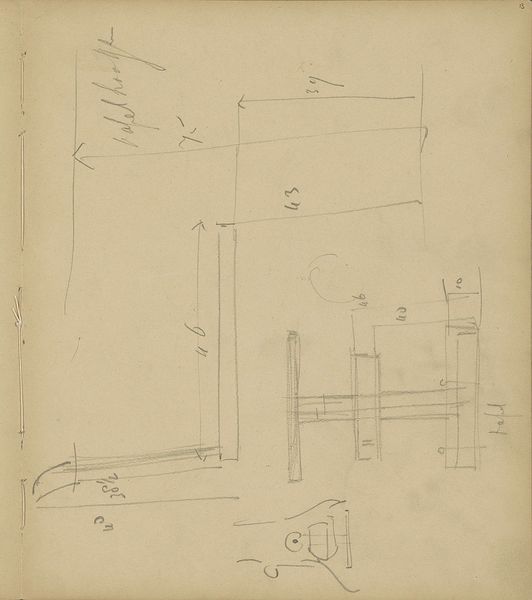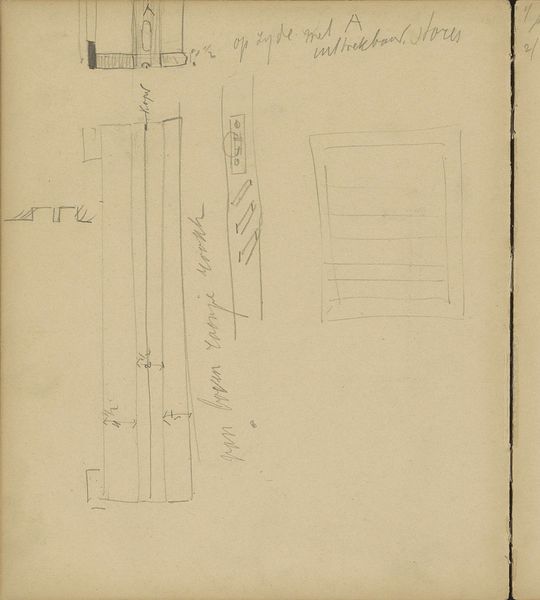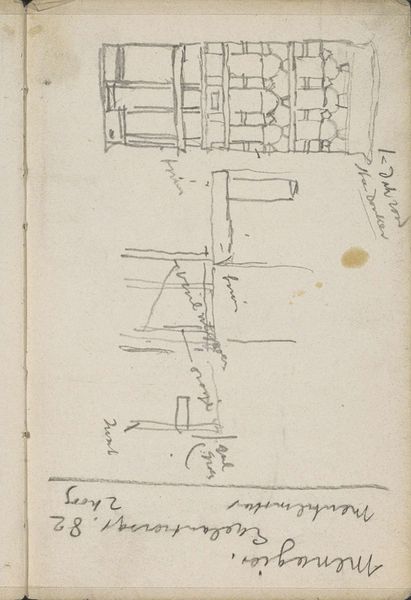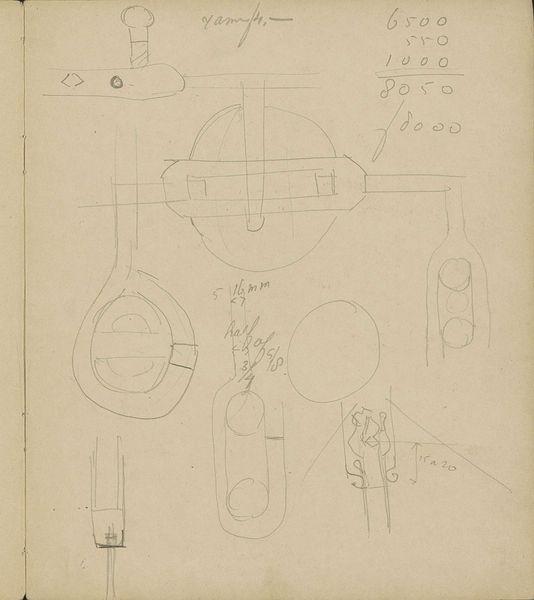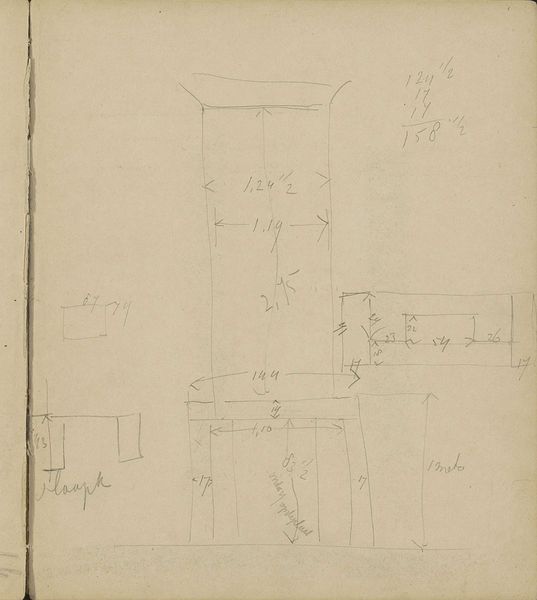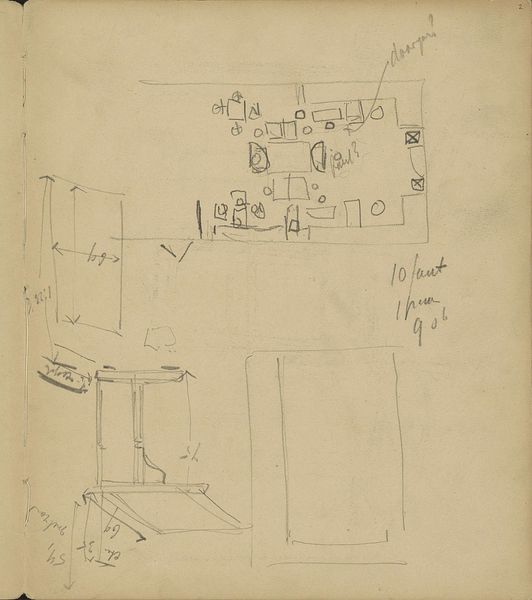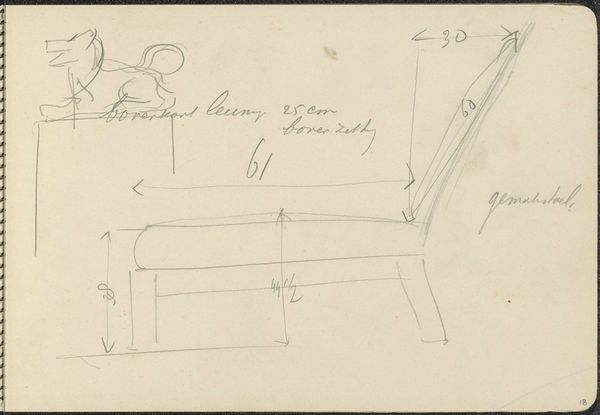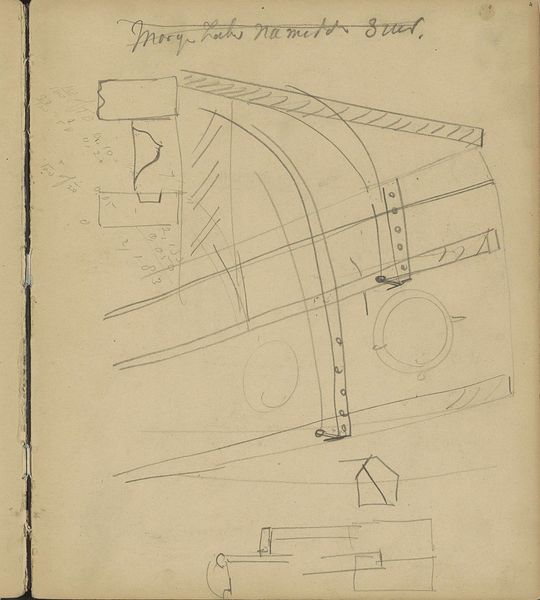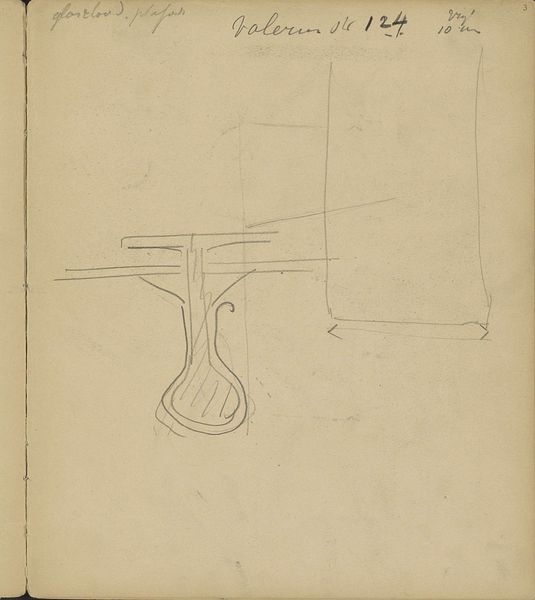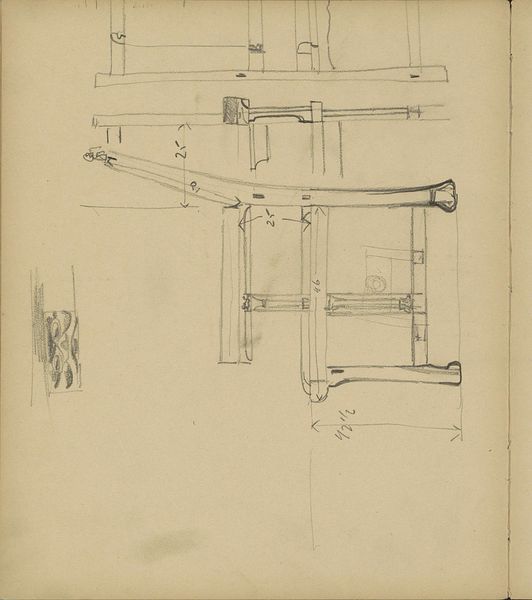
drawing, pencil
#
drawing
#
aged paper
#
toned paper
#
light pencil work
#
art-nouveau
#
sketch book
#
hand drawn type
#
form
#
personal sketchbook
#
idea generation sketch
#
sketchwork
#
geometric
#
pencil
#
sketchbook drawing
#
sketchbook art
Copyright: Rijks Museum: Open Domain
Editor: Here we have Carel Adolph Lion Cachet's "Ontwerp voor een lamp," dating back to about 1906. It’s a pencil drawing, a design sketch really. It feels like a glimpse into the artist's notebook. What jumps out at you? Curator: What strikes me is the inherent social ambition contained within even this preparatory sketch. It's not merely about the lamp’s form. Consider the social context: Around 1906, the Art Nouveau movement was in full swing, advocating for beautiful design in everyday life. These weren't just lamps; they were statements about accessible aesthetics, intending to uplift the domestic sphere. Editor: So, you're saying even a simple lamp design held bigger cultural significance? Curator: Precisely. Lion Cachet’s work was often tied to promoting Dutch identity and craftsmanship. Does the geometric simplicity contrast with the organic lines we often associate with Art Nouveau? Editor: I see what you mean. The design almost feels…industrial, or pre-modern in a way, with the mix of geometric shapes with art-nouveau influences. Curator: It highlights a fascinating tension within the era. How do you reconcile mechanized production with handcrafted beauty? The calculations scrawled on the page seem to address concerns about accessibility and economics directly. Editor: I didn't even notice those notes at first! It brings another element. It's function, art, and a bit of mathematics all in one place. Curator: It points to a democratic ideal—good design, available to many. These seemingly random numbers offer us a peek into art production and consumption. It encourages a bigger look beyond artistic inspiration to reveal how economics played a key role in these objects we see today. Editor: That’s given me so much to think about, seeing a drawing and considering socioeconomic factors in lamp design of all things!
Comments
No comments
Be the first to comment and join the conversation on the ultimate creative platform.
